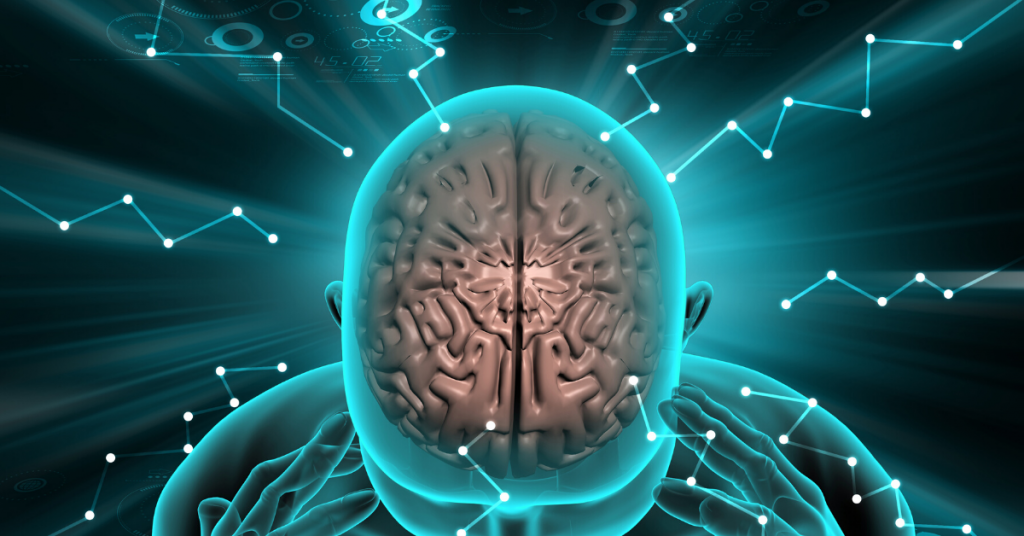Every Concussion Is Different
A “concussion” is the historical term representing low-velocity injuries that cause brain “shaking.” (1)(the word, in fact, is derived from the Latin concutere, meaning to shake violently) It is a subset of mTBI (mild traumatic brain injury) (2)(, a term with which it is often used interchangeably. (1)
In layperson’s terms, a concussion results from trauma (usually but not always a blow to the head) which causes the brain – a jellylike structure which is normally protected from collisions with the skull by a tough, fluid-filled membrane – to collide with the skull.
A concussion causes temporary metabolic changes in brain function (3) which one expert likens a concussion to a break in the local cables in a phone network that results in lengthy re-routing of the call so that when it finally gets through, it’s delayed and full of static.
Four common features
While no two concussions are exactly the same, according to the Fifth International Consensus Statement on Concussion in Sport (4) issued in April 2017, a concussion is a traumatic brain injury induced by biomechanical forces, and all share several common features that may be utilized in making a clinical diagnosis of concussive head injury, including:
1. A direct blow to head not required. SRC may be caused either by a direct blow to the head, face, neck, or elsewhere on the body with an impulsive force transmitted to the head.
2. Rapid onset and gradual resolution of symptoms. SRC typically results in the rapid onset of short-lived impairment of neurological function that resolves spontaneously. However, in some cases, symptoms and signs may evolve of a number of minutes to hours.
- 3. Brain function disrupted. A concussion may result in neuropathological changes, but the acute clinical signs and symptoms largely reflect a functional disturbance rather than a structural injury to the brain itself, and, as such, no abnormality is seen on standard structural neuroimaging studies.
4. Loss of consciousness not required. Concussion results in a range of clinical signs and symptoms that may or may not involve loss of consciousness. Resolution of the clinical and cognitive features typically follows a sequential course. However, it is important to note that in some cases symptoms may be prolonged.
For a diagnosis of concussion, the clinical signs and symptoms cannot be explained by drug, alcohol, or medication use, other injuries, peripheral vestibular dysfunction, etc.) or other comorbidities (e.g. psychological factors or coexisting medical conditions).
Unresolved issues
The 5th Consensus Statement on Concussion in Sport notes that the operational definition of concussion provides no “insights into the underlying processes through which the brain is impaired, nor do they distinguish different grades of severity, nor reflect newer insights into the persistence of symptoms and/or abnormalities on specific investigational modalities,” an issue “clouded not only by a lack of data, but also by confusion in definition and terminology. The authors specifically note that the use of the term mTBI, which, as noted above, is often used interchangeably with concussion, is “similarly vague and not based on validated criteria.”
“One key unresolved issue,” the Statement notes, is whether concussion is part of a TBI spectrum associated with lesser degrees of diffuse structural change than are seen in severe TBI, or whether concussive injury is the result of reversible physiological changes. Because the term concussion, “while useful, is imprecise, and because disparate author groups define the term differently, comparison between studies is problematic.”
1. McCrory P, et al. Consensus statement on concussion in sport: the 4th International Conference on Concussion in Sport held in Zurich, November 2012. Br J Sports Med 2013;47:250-258.
2. Dematteo CA, Hanna SE, Mahoney WJ. et al. My child doesn’t have a brain injury, he only has a concussion. Pediatrics2010;125(2):327-334.
3. Giza CC, Hovda DA, The Neurometabolic Cascade of Concussion. J. Ath Train 2001;36(3):228-235.
4. McCrory P, Meeuwisse W, Dvorak J, et al. Consensus Statement on concussion in sport – the 5th international conference on concussion in sport held in Berlin, October 2016. Br J Sports Med. Published Online First: 27 April 2017. doi:10.1136/bjsports-2017-097699.
Updated April 28, 2017

